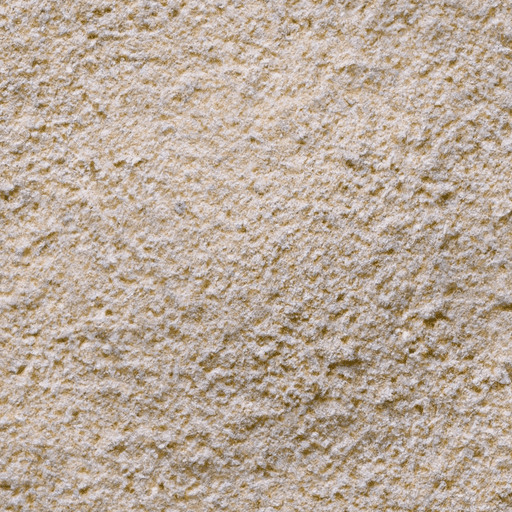Discover the Versatility of Brown Rice Flour
If you’re searching for a versatile alternative to traditional wheat flour, look no further than brown rice flour. This gluten-free flour has gained popularity in recent years due to its nutty flavor, impressive nutritional profile, and wide range of uses in cooking. Whether you follow a gluten-free lifestyle or simply want to experiment with new ingredients, brown rice flour is worth exploring. In this article, we’ll dive into the world of brown rice flour, exploring its taste, common uses, nutritional benefits, and interesting history.
Taste and Texture
Brown rice flour offers a distinct nutty taste that adds a delightful flavor dimension to various dishes. When used in baking, it lends a subtle earthy aroma to bread, muffins, and cookies, making them truly extraordinary. It also delivers a slightly denser texture compared to wheat flour, resulting in a more hearty and satisfying end product.
Culinary Applications
One of the most remarkable aspects of brown rice flour is its versatility in the kitchen. It can be used as a standalone flour or blended with other gluten-free flours to create custom blends for different recipes. Here are some popular uses of brown rice flour:
- Baking: Whether you’re whipping up pancakes, biscuits, or cakes, brown rice flour can be a fantastic substitute for wheat flour. It lends a gentle flavor and moisture to baked goods, ensuring a delightful texture and taste.
- Breading and Coating: When it comes to breaded dishes like chicken tenders or onion rings, brown rice flour works wonders, providing a crispy exterior while remaining gluten-free.
- Thickening Agent: Due to its excellent thickening properties, brown rice flour can be used to thicken sauces, gravies, and soups. It is an ideal option for those who prefer gluten-free alternatives to traditional roux.
- Binder: Brown rice flour works as a great binding agent in recipes like veggie burgers or meatballs, allowing you to create cohesive and flavorful dishes.
Nutritional Benefits
Apart from its culinary advantages, brown rice flour offers several nutritional benefits. Here’s what you can expect from this gluten-free flour:
- High in Fiber: Brown rice flour is rich in dietary fiber, promoting healthy digestion and providing a feeling of fullness after meals.
- Vitamins and Minerals: It contains essential nutrients like magnesium, phosphorus, and B vitamins, supporting various bodily functions.
- Gluten-Free: For those with gluten sensitivities or celiac disease, brown rice flour is an excellent alternative to gluten-containing grains.
Interesting Facts
To add a little intrigue, here are some fascinating facts about brown rice flour:
- Brown rice flour has been used in traditional Asian cuisine for centuries and is a staple ingredient in Japanese mochi, a delicious chewy rice cake.
- The milling process used to produce brown rice flour helps retain more nutrients compared to white rice flour, making it a healthier choice.
- Experimenting with brown rice flour in your favorite recipes can open up a world of gluten-free possibilities, allowing you to create unique and delicious dishes.
Conclusion
Whether you’re following a gluten-free diet, looking to expand your culinary horizons, or simply drawn to its nutty flavor, brown rice flour is an excellent addition to any kitchen. Its versatility in baking, breading, and thickening opens up a world of possibilities, while its nutritional benefits make it a healthy choice. So, why not give brown rice flour a try and unlock new dimensions of taste and texture in your cooking adventures? Happy baking and cooking!
Note: The information provided in this blog post is for educational purposes only and should not be considered as medical or dietary advice. Please consult with a qualified professional before making any significant changes to your diet.
Brown Rice Flour
Origin: Brown rice flour is made from whole-grain brown rice, which is the unpolished version of white rice. It has been a staple in various cultures for thousands of years and is believed to have originated in Southeast Asia.
Common Uses: Brown rice flour has gained popularity in recent years due to its gluten-free nature. It is widely used as a substitute for wheat flour in gluten-free baking and cooking. It adds a nutty flavor and a slightly denser texture to baked goods.
Nutritional Benefits: Brown rice flour is a good source of dietary fiber and contains higher levels of vitamins and minerals compared to refined white rice flour. It is high in manganese, magnesium, phosphorus, and B vitamins. It also contains antioxidants and has a lower glycemic index than white rice flour.
Unique Properties: Brown rice flour has a coarser texture compared to refined white rice flour. It is highly absorbent and can absorb more moisture during cooking or baking. This can affect the texture of the final product, requiring adjustments in recipes.
Historical Significance: Rice has been a staple food for many cultures around the world. The process of milling rice to create different types of flour has been practiced for centuries. Brown rice flour, with its higher nutrient content compared to white rice flour, has gained popularity in response to the growing demand for gluten-free and nutritious alternatives in modern diets.
Please note that while brown rice flour is gluten-free, it is important to ensure that it is produced in a gluten-free facility to avoid cross-contamination if you have gluten sensitivities or celiac disease.




Use the share button below if you liked it.
It makes me smile, when I see it.